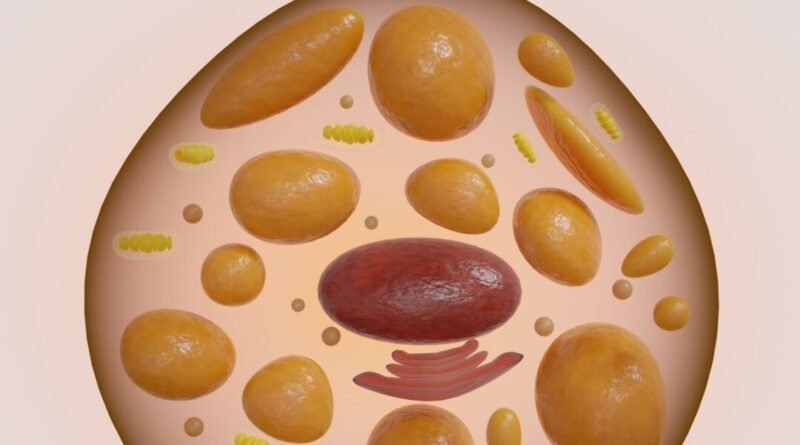Increase Your Body’s Brown Fat Levels
Some interventions may boost brown fat safely, while others may have adverse effects.
Brown fat is associated with weight loss and a reduced risk of cardiovascular disease and diabetes. Exposure to somewhat cooler temperatures and eating certain foods, such as red pepper, may activate it.
In contrast, some practices that boost brown fat may cause harm. For instance, the keto diet, a popular eating plan with Weight Watchers, may not be a long-term healthy way of tapping into the potential benefits.
Given the power of brown fat to improve health, it is good to be familiar with safe and unsafe ways of harnessing it.
Different Types of Fat
All fat is not alike. The body contains white, brown, and beige fat, each with different actions and characteristics.
Clinical dietitian Ria Hawle, who specializes in diabetes and cardiac nutrition, explained the difference between white and brown fat to The Epoch Times in an email.
“Brown fat, located around the neck and above the collar bone, is a unique type of fat that is different from the more familiar white fat,” she said. “White fat is all about storing energy, but brown fat burns calories. This burning happens through a process called thermogenesis, which involves heat generation through a high concentration of mitochondria, often called the powerhouses of the cells.”
Brown Fat Benefits
A cohort study published in Nature Medicine retrospectively looked at 52,487 individuals to explore the health benefits of brown fat. Those with more brown fat had lower prevalences of:
- Type 2 diabetes
- Coronary heart disease
- Unhealthy blood lipids
- Cerebrovascular disease, conditions involving the blood flow to the brain
- High blood pressure
- Congestive heart failure
They also had improved triglycerides, blood glucose, and high-density lipoproteins, the “good” type of cholesterol. The findings indicate that brown fat may contribute to cardiometabolic health, the researchers concluded.
A factor that may underlie the above benefits is that brown fat is connected to healthier white fat distribution, noted the CRM study. This means it causes less white fat to be stored in the belly. When belly fat decreases, the risks associated with it also decline.
“Most mitochondria in the body produce ATP, which is a universal energy currency for the cell, but brown fat cells produce heat instead of ATP,” corresponding author Alexander Bartelt said in an email interview with The Epoch Times.
“We now discovered a small molecule called IF1 which acts as a switch for ATP production and thus dictates to brown fat cells how much ATP they dissipate into heat,” he continued.
Packing on Brown Fat
The CRM study stated that improved health indicators are associated with an increased number of brown fat deposits and boosted activity. In other words, their function, as well as their quantity, are important. The below practices can help improve the number, function, or both.
Cold Exposure
A systematic review and meta-analysis published in Frontiers in Physiology found that cold exposure could increase energy expenditure and brown fat activity in adults.
Foods and Beverages
A review published in the journal Nutrients noted that the following can promote heat generation in brown fat:
- Caffeine, an ingredient in tea and coffee
- Resveratrol, an antioxidant in berries and grapes
- Capsinoids, a phytochemical primarily in red pepper
- Proteins
- Omega-3 fatty acids, which are present in fatty fish, such as salmon
- 12 13-dihome, a nutrient that increases in response to exercise
Dietary Patterns
A review published in Frontiers in Endocrinology (FE) reported that two dietary patterns promoted the browning of white fat and had anti-obesity effects.
Every-other-day fasting stimulated beige fat development within white fat and reduced insulin resistance, obesity, and fatty liver disease. Intermittent fasting in a one-day-fasting-and-two-day-refeeding dietary pattern also promoted heat generation with ensuing anti-obesity effects.
Exercise
“Regular exercise, especially high-intensity interval training, doesn’t just help with muscle tone and endurance, but it can also boost brown fat activity,” said Hawle.
According to the FE review, exercise, specifically swimming and running training, triggers the transformation of white fat to brown fat in various ways. However, whether it increases heat generation is under debate.
Possible Risks
The FE review warned that some strategies for activating or increasing brown fat may overstimulate the sympathetic nervous system, negatively affecting certain people. The sympathetic nervous system, known as the fight-or-flight system, regulates many body functions, including heart rate and blood pressure.
For example, cold exposure activates sympathetic nerves and raises systolic blood pressure, which is the top reading. It also leads to rapid heartbeat and heart strain, effects that increase the likelihood of cardiovascular disease. Consequently, cold exposure isn’t a safe anti-obesity approach for people who have experienced a heart attack or stroke, the FE review said.
Keto Diet and Brown Fat
The keto diet, an eating plan with very low carbohydrates, moderate proteins, and high fats, has garnered much public interest, as some short-term studies indicate it may increase brown fat and promote weight loss. However, because most of the research on the diet is short-term, the long-term health implications are unknown.
In fact, the medical community has serious concerns about the diet’s safety. Jeoff Drobot, founding member of the American Center for Biological Medicine, told The Epoch Times in an email that he strongly warns against using the diet for weight management. “Many individuals may experience initial weight loss due to restriction of carbohydrates and water weight, but this may not be sustainable or healthy in the long run,” he said.
Drobot explained that the keto diet is high in foods that are linked to chronic diseases, such as heart disease and diabetes. These include large amounts of highly processed foods and saturated fats from sources like red meat.
“It is also low in protective foods such as fruits, vegetables, and whole grains, which are important for overall health and disease prevention,” he added.
Hawle pointed out that such protective foods are packed with essential nutrients—fiber, vitamins, and minerals—vital to overall health. “Long-term adherence to the keto diet could lead to a lack of these important nutrients, raising the risk of deficiencies,” she said.
Additionally, the restrictive nature of the keto diet makes it difficult for many people to follow in the long term, Hawle continued. Its rigid guidelines can lead to feelings of deprivation, trigger disordered eating patterns, and make maintaining weight loss more challenging once the diet is discontinued.
Instead of the keto diet, Hawle advocates a three-pronged strategy. “This involves a diet rich in nutrient-dense unprocessed foods, manageable portion sizes, and regular exercise, which is often a more practical and lasting solution for achieving and maintaining a healthy weight.”
The Right Approach
Finding balance is key when it comes to harnessing the benefits of brown fat activation, advised Hawle. “You can incorporate natural methods, like exposing yourself to cooler environments and exercising regularly, without pushing too far,” she said.
Howle noted that healthy lifestyle practices other than a nutritious diet—including getting enough sleep, managing stress, and staying well hydrated—are equally important as a healthy diet. These aspects contribute to overall health and help keep your metabolism functioning properly.
For people thinking about making major lifestyle changes, especially if they have underlying health concerns, it is wise to consult with a specialized doctor, she recommended.
“Taking a balanced and sustainable approach allows you to reap the benefits of brown fat activation while minimizing the risks associated with overstimulation,” Howle said.






